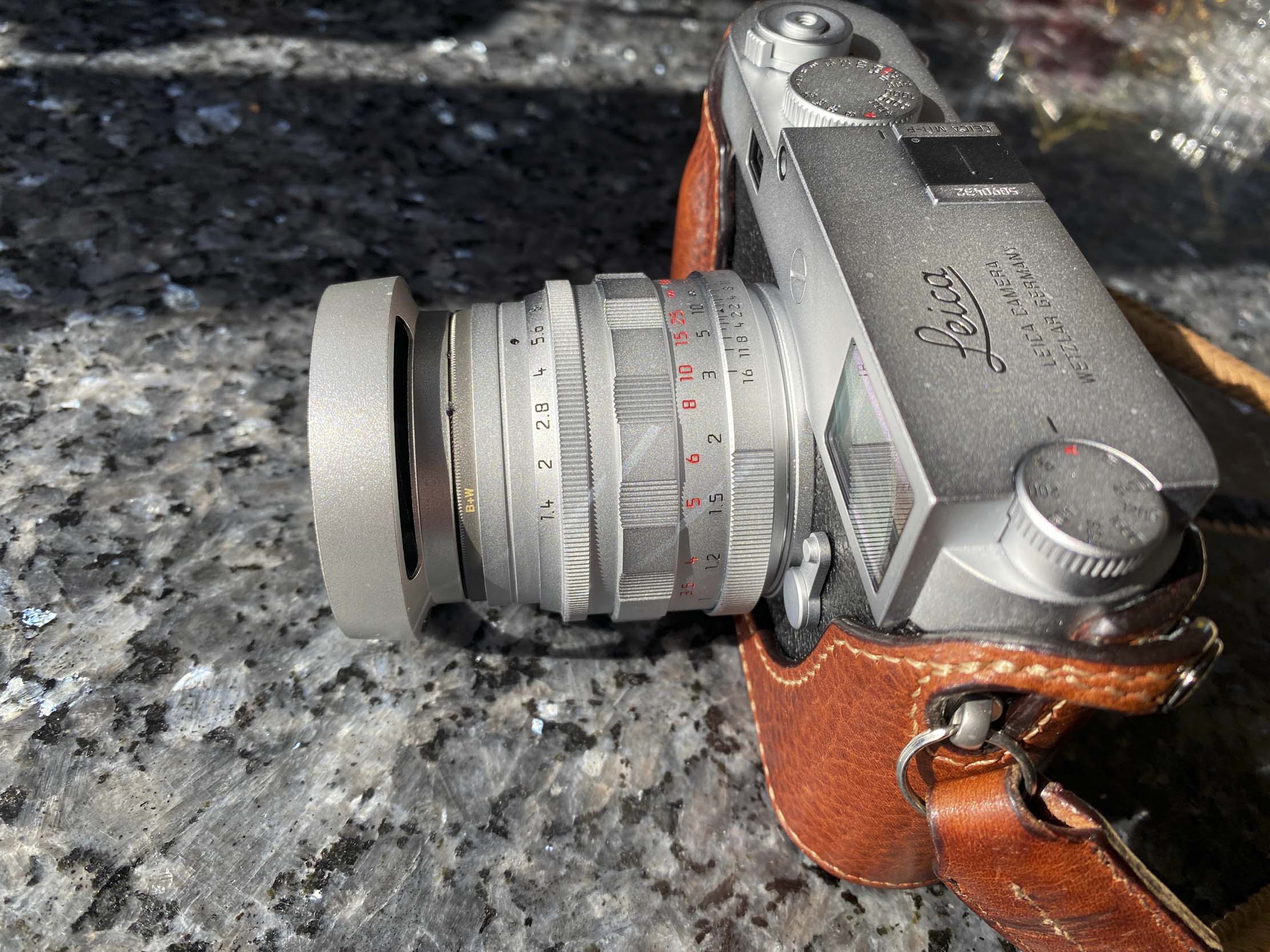The Leica Classic Line of retro lenses, in which it relaunches modern versions of its most significantly historic lenses, is proving popular. After watching the progress, I decided to put my toe into the retro ripples a couple of months ago with the latest example. The lens in question is the new (February 2025) version Summilux-M 50mm f/1.4 which was originally produced between 1959 and 1961.
As Jonathan Slack points out in his excellent Macfilos review of this lens, it joins four existing Leica Classic Line resurrections: The 28mm Summaron-M f/5.6, the 90mm Thambar-M f/2.2, the 50mm Noctilux-M f/1.2 and the 35mm Summilux-M f/1.4 “steel-rim”.
Leica Classic Line: Iconic
In the introduction to the Summilux-M 50mm f/1.4 Classic Line, Leica described it as based on its iconic predecessor from 1959: “Be inspired by the vintage design, excellent imaging performance, and extraordinarily beautiful bokeh of this classic lens”.
Justification
I was soon dreaming of all the logic that would encourage me to buy this latest entry to the Leica Classic Line. When we want something, the justification just comes flooding in:
- For a new f/1.4 lens, the price is reasonable (by Leica standards)
- It’s a suitable alternative to the oh-so-perfect APO-Summicron-M 50mm f/2.0.
- It has a less-modern rendering without facing the age-risk issues in using the mid-century original.
- The lens body is appealing since it is a reproduction of the Summilux v1.
- New-found ease of use with the M11’s base ISO of 64 and the electronic shutter’s top-speed of 1/16000s.
The late Erwin Puts sealed the deal, “the optical cell has been fitted in one of the most beautiful mounts that Leitz has ever designed”.
No ND filter
On the fifth justification, above, it’s worth emphasising that the faster shutter of the M11 more or less removes any need to use an ND filter, which would not have been in the case back in the sixties. Sometimes, new technology does have its advantages, even for a vintage lens. The M11’s hybrid shutter facility is a great help, operating as a traditional manual shutter up to 1/4000s and electronically thereafter.
There’s one snag, nevertheless. The electronic shutter, when it kicks in automatically, is absolutely silent and my initial reaction was that nothing had happened. I wish Leica would consider adding a shutter noise, as is the case with most cameras, but Jonathan Slack tells me that the reason they can’t do this is that there is no speaker built into the body.
As it is, this silence of the post-4000ths is disconcerting and has led me to press the shutter more than once on many occasions. Some confirmation would definitely be welcome.
Wonderful heft
The Leica Classic Line Summilux-M 50mm f/1.4 has a lovely ‘heft’, largely because of the brass construction. It comes with an original style clip-on circular, vented black lens hood. It’s a beautiful enhancement for a wonderful lens, but I think it is easily lost. Bayonet fixing is often less secure than a screw thread.
I imagined losing this fairly quickly, so easily found a cheapo third-party replacement for general daily use — but in a matching silver finish. It came with a clip-in lens cap and a piece of thread to make a “gasket” to assist with alignment. The image shows the hood in situ with a protective filter inserted.
Stopped down
The results from the Leica Classic Line Summilux-M 50mm f/1.4 are much better than I imagined, and this lens has become my go-to optic for general photography.
The shots taken at f/1.4 demonstrate the vintage nature of the optics, but, stopped down to even f/5.6 the lens matches the performance of a modern 50mm lens, if not as sharp overall as that outstanding APO-Summicron-M 50mm f/2.
The Leica Classic Line of lenses is a very welcome addition to the ever-more-perfect glass that is benefiting from improvements in optics, glass technology and manufacturing techniques. Such excellence was unobtainable when these older lenses were first produced. Nevertheless, the vintage rendering and overall performance produce something unforgettable.
Leica Classic Line: A touch of luxury
And, mostly, they come at affordable prices, allowing us a touch of vintage excellence without the higher cost of modern lenses or, in some cases, the exorbitant cost of the original version. A case in point is the 35mm Summilux-M f/1.4 Classic Line steel-rim lens. An original might set you back more than £30,000 and is one for collectors rather than serious users.
The Classic Line interpretation of the steel rim (£3,450 |€4,090 |$4,380) is affordable and, of course, benefits from modern manufacturing excellence. The Summilux-M 50mm f/1.4 is not so expensive in original form, but the new Classic Line copy, reviewed here, gives me a flavour of the classic combined with modern build quality and modern lens coating to further enhance the experience.
The Summilux-M 50 f/1.4 costs £3,310 | €3,850 | $4,168 and is available in Leica Stores and authorised dealers throughout the world.
Leave a reply and join in the discussion
The comments section below every article is a friendly, non-confrontational space where you can air your views without fear of stirring the sort of hornets’ nest that is so often a feature of websites. We welcome your views on the content of our articles, and your opinions on all aspects of photography are a lifeblood for Macfilos. Please let us know, in the section below, if you agree or disagree with our authors’ opinions — and please have no hesitation in adding your advice if you think we’ve overlooked anything important.









My findings are different. It’s pretty much so similar to a ASPH that I’ve narrowed down whether to own this lens os down to 3 things
The aesthetics of the lens
The ergonomics
Sharp corners
So my question for you Keith, is whether this could be your only lens, or at least your only 50mm lens?
Good question. Simple answer ‘no’. It is a very heavy lens for an all day ‘one camera/lens’ outing. The APO-Summicron is lighter and easier to use with focus tab. I also like to go with the Elmar-M 2.8 occassionaly as that is a lovely lens and virtually indistinguishable from others at f5.6! Then if I am the mood to add to the ‘shooting with old glass’ theme go with the LTM Summitar from the year of my birth.There is no bad Leica 50 IMHO.